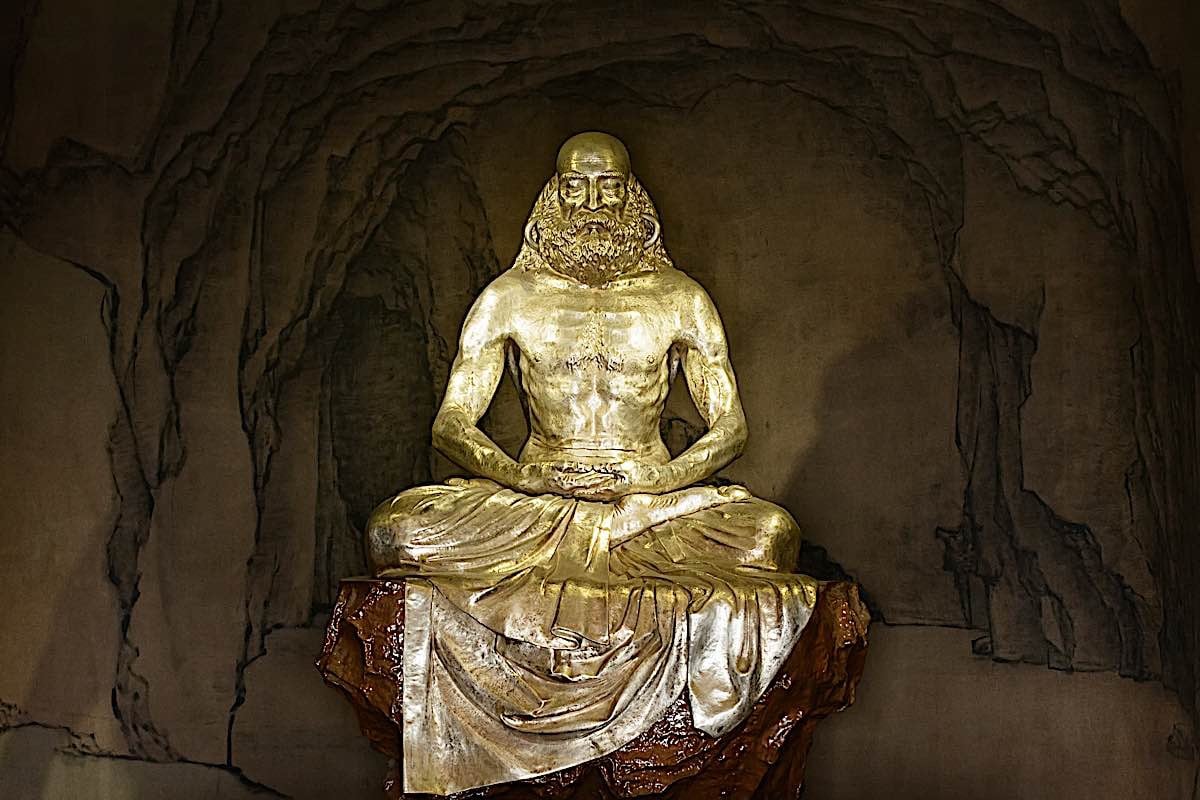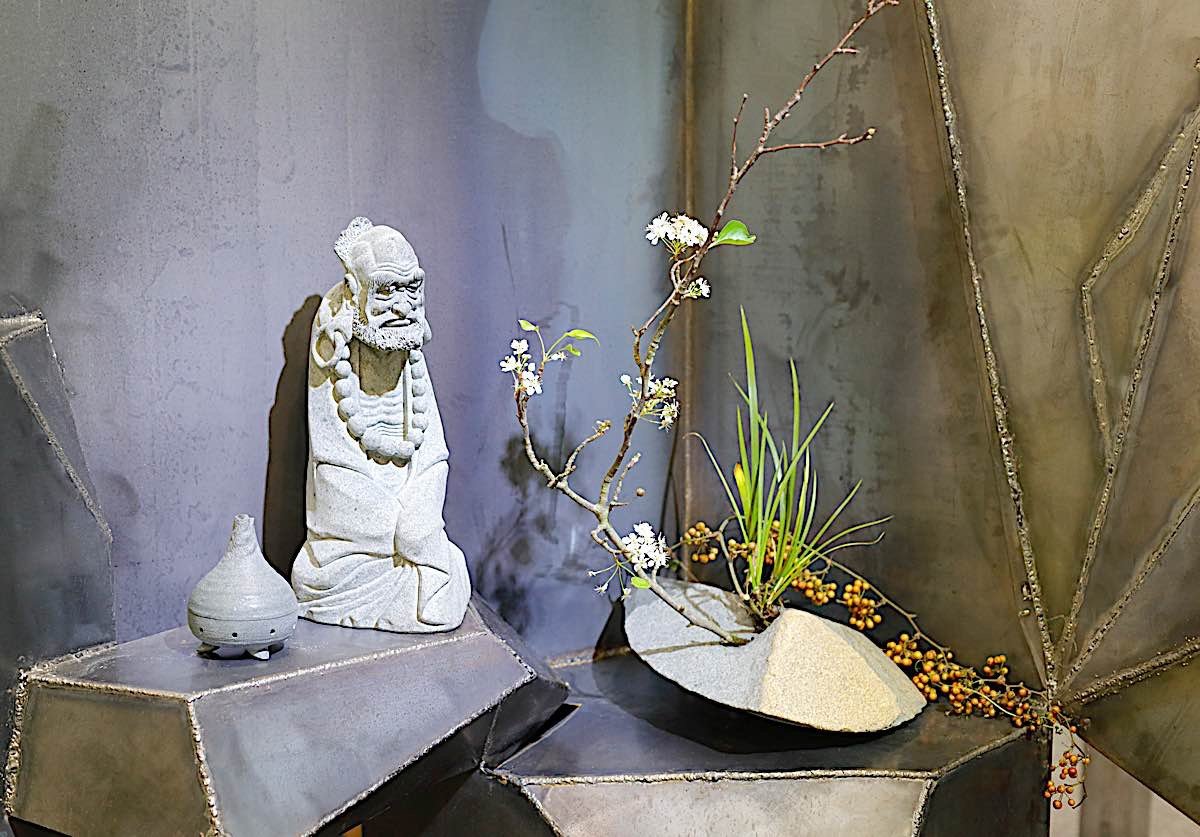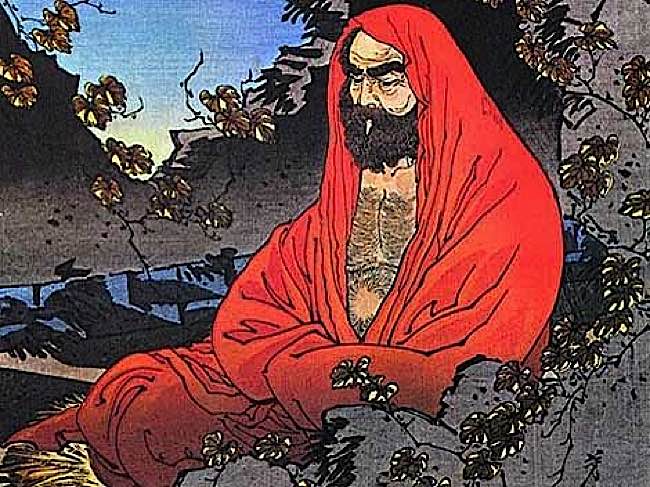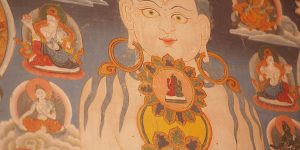Bodhidharma’s Breakthrough Teaching: Shastra on Eradicating Appearances
Bodhidharma[1] is one of the most venerated Buddhist masters of the far east. He was an Indian monk known for having brought the Zen[2] teachings to China, which then spread to Japan and other regions. He left behind four principle dialogues, presumably recorded by his disciples. In the Breakthrough Sermon, or Shastra on Eradicating Appearances[3], Bodhidharma touches on many important Buddhist concepts, such as the three poisons[4], samsara[5], the six sense faculties[6], and the six paramitas (perfections)[7].
By Eddie Sobenes [Bio below]

Perceiving one’s mind
The dialogue begins when a disciple asks Bodhidharma which method is the most expedient for attaining buddhahood. Bodhidharma answers without hesitation, that “perceiving one’s mind[8]” is the most direct, since it is the essence of all other methods.

To Bodhidharma, all self-cultivation occurs in the mind. Therefore, all practices should be focused on it, with the goal of perceiving one’s fundamental-nature[9]. Nothing outside ourselves should be pursued, because one’s Buddha-nature is latent within the mind.
The mind, as he saw it, is essentially clear and pure. The only difference between our minds and the mind of a Buddha is our defilements. The mind of a saint is impartial and introspective; the mind of the vulgar is filled with attachments, cravings, and is ever-clinging to material things. Yet, both minds, the saintly and the vulgar, are essentially the same in nature; both have the potential to attain buddhahood.
The Three Poisons
The three main obstacles facing the practitioner are greed, anger, and ignorance, also known as the three poisons; all problems stem from these.
We create karma due to our actions motivated by the three poisons and this karma keeps us trapped in cyclic existence. The only way to overcome these obstacles is by upholding the precepts, practicing meditation, and cultivating wisdom[10]. In a nutshell, we must eradicate the evil within our minds, cultivate virtue, and save sentient beings in order to reach the other shore[11].
When Bodhidharma was questioned about an apparent discrepancy between his teachings and those in the sutras, the Zen master was quick to admit that the sutras are true and correct. The sutras name many convenient methods by which both lay people and monastics can practice. However, most practitioners misinterpret the real meaning of the rituals. To Bodhidharma, all rituals and practices occur in the mind. Moreover, many of these rituals were created to attract people at various stages of spiritual development to the Path[12].

For Bodhidharma, the true meaning of the practices mentioned in sutras is symbolic. For example, Bodhidharma claims that the Buddha was not talking literally about incense in the sutras, he was using incense as a symbol for overcoming foulness and ignorance. Similarly, flower offerings are a symbol of sanctity and dignity. A true flower offering is an offering of dignity and solemnity, which never withers like worldly flowers.
Sangharama — a pure and clean place
The sutras encourage followers to practice in a sangharama[13], which is often mistaken for a temple or monastery. According to Bodhidharma, the original meaning of that term is “a pure and clean place[14]”. Bodhidharma said that if one’s mind is pure and clean, then wherever one goes is a sangharama. Master Bodhidharma discusses the symbolism of bathing, wearing undergarments, making prostrations, and Buddha name recitation in a similar manner.

The Six Paramitas
Bodhidharma’s description of the relationship between the six paramitas and the sense faculties (sight, hearing, smell, taste, touch, and consciousness) is noteworthy. He says that the six sense faculties become our adversaries if left undisciplined by the mind.
The only way to transform these six adversaries into pure consciousness is by practicing the six paramitas: charity, precepts, forbearance, diligence, meditation, and wisdom.
Bodhidharma’s sermon reminds us that we should not become attached to material or exoteric rituals, and if we do engage in them, we should keep their symbolism in mind. Although they are convenient, useful, and important, no amount of burned incense or flower offerings can lead us to enlightenment.
Bodhidharma himself said that he was not searching for the Buddha, he was investigating the mind; if one seeks the Buddha, they should investigate their mind, for there is no Buddha outside one’s mind.

NOTES
[1] Lineage Master Bodhidharma, 達摩祖師; The 5th century Indian monk credited with bringing the Zen tradition to China.
[2] 禪, Dhyana
[3] 破相論
[4] 三毒,greed, hatred, ignorance
[5] 輪迴,cyclic existence, referring to the cycle of birth, death, and rebirth in the 6 paths of existence.
[6] 六根,the five senses plus the mental coordinator.
[7] 六度,六波羅蜜, six perfections
[8] 觀心
[9] 見性
[10] 戒定慧,三學,śikṣā
[11] nirvana
[12] 道,here meaning Buddhism
[13] 修伽藍
[14] 清淨地
1 thought on “Bodhidharma’s Breakthrough Teaching: Shastra on Eradicating Appearances”
Leave a Comment
More articles by this author

Song of Enlightenment by Master Yonglia — going beyond all dualisms, theories, names, forms, preferences and aversions.

Four heroic incarnations of Ksitigarbha, the “Earth Store” Bodhisattva — unfailing, never-tiring compassion
Search
Latest Features
Please support the "Spread the Dharma" mission as one of our heroic Dharma Supporting Members, or with a one-time donation.
Please Help Support the “Spread the Dharma” Mission!

Be a part of the noble mission as a supporting member or a patron, or a volunteer contributor of content.
The power of Dharma to help sentient beings, in part, lies in ensuring access to Buddha’s precious Dharma — the mission of Buddha Weekly. We can’t do it without you!
A non-profit association since 2007, Buddha Weekly published many feature articles, videos, and, podcasts. Please consider supporting the mission to preserve and “Spread the Dharma." Your support as either a patron or a supporting member helps defray the high costs of producing quality Dharma content. Thank you! Learn more here, or become one of our super karma heroes on Patreon.
Eddie Sobenes
Author | Buddha Weekly
Eddie Sobenes is a high school English teacher. He is interested in Mahayana sutras, education, and music composition.
Website
www.sites.google.com/site/sobenesmusic















Chan was born in China “after Bodhidhrma’s arrival”. And then Chan was brought to Japan as Zen.